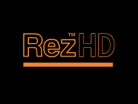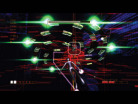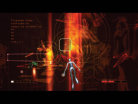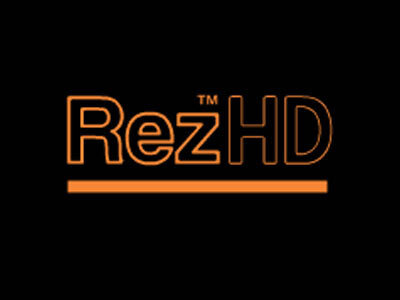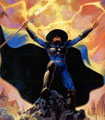- CLASSIC MAGAZINES
- REVIEW CREW
A show recapping what critics thought back
when classic games first came out! - NEXT GENERATION'S BEST & WORST
From the worst 1-star reviews to the best
5-stars can offer, this is Next Generation! - NINTENDO POWER (ARCHIVE)
Experience a variety of shows looking at the
often baffling history of Nintendo Power! - MAGAZINE RETROSPECTIVE
We're looking at the absolutely true history of
some of the most iconic game magazines ever! - SUPER PLAY'S TOP 600
The longest and most ambitious Super NES
countdown on the internet! - THEY SAID WHAT?
Debunking predictions and gossip found
in classic video game magazines! - NEXT GENERATION UNCOVERED
Cyril is back in this spin-off series, featuring the
cover critic review the art of Next Generation! - HARDCORE GAMER MAGAZING (PDF ISSUES)
Download all 36 issues of Hardcore Gamer
Magazine and relive the fun in PDF form!
- REVIEW CREW
- ELECTRONIC GAMING MONTHLY
- ELECTRONIC GAMING MONTHLY RANKS
From Mario to Sonic to Street Fighter, EGM
ranks classic game franchises and consoles! - ELECTRONIC GAMING MONTHLY BEST & WORST
Counting down EGM’s best and worst reviews
going year by year, from 1989 – 2009! - ELECTRONIC GAMING BEST & WORST AWARDS
11-part video series chronicling the ups and
downs of EGM’s Best & Worst Awards!
- ELECTRONIC GAMING MONTHLY RANKS
- GAME HISTORY
- GAME OVER: STORY BREAKDOWNS
Long-running series breaking down game
stories and analyzing their endings! - A BRIEF HISTORY OF GAMING w/ [NAME HERE]
Real history presented in a fun and pithy
format from a variety of game historians! - THE BLACK SHEEP
A series looking back at the black sheep
entries in popular game franchises! - INSTANT EXPERT
Everything you could possibly want to know
about a wide variety of gaming topics! - FREEZE FRAME
When something familiar happens in the games
industry, we're there to take a picture! - I'VE GOT YOUR NUMBER
Learn real video game history through a series
of number-themed episodes, starting at zero! - GREAT MOMENTS IN BAD ACTING
A joyous celebration of some of gaming's
absolute worst voice acting!
- GAME OVER: STORY BREAKDOWNS
- POPULAR SHOWS
- DG NEWS w/ LORNE RISELEY
Newsman Lorne Riseley hosts a regular
series looking at the hottest gaming news! - REVIEW REWIND
Cyril replays a game he reviewed 10+ years
ago to see if he got it right or wrong! - ON-RUNNING FEUDS
Defunct Games' longest-running show, with
editorials, observations and other fun oddities! - DEFUNCT GAMES QUIZ (ARCHIVE)
From online quizzes to game shows, we're
putting your video game knowledge to the test!- QUIZ: ONLINE PASS
Take a weekly quiz to see how well you know
the news and current gaming events! - QUIZ: KNOW THE GAME
One-on-one quiz show where contestants
find out if they actually know classic games! - QUIZ: THE LEADERBOARD
Can you guess the game based on the classic
review? Find out with The Leaderboard!
- QUIZ: ONLINE PASS
- DEFUNCT GAMES VS.
Cyril and the Defunct Games staff isn't afraid
to choose their favorite games and more! - CYRIL READS WORLDS OF POWER
Defunct Games recreates classic game
novelizations through the audio book format!
- DG NEWS w/ LORNE RISELEY
- COMEDY
- GAME EXPECTANCY
How long will your favorite hero live? We crunch
the numbers in this series about dying! - VIDEO GAME ADVICE
Famous game characters answer real personal
advice questions with a humorous slant! - FAKE GAMES: GUERILLA SCRAPBOOK
A long-running series about fake games and
the people who love them (covers included)! - WORST GAME EVER
A contest that attempts to create the worst
video game ever made, complete with covers! - LEVEL 1 STORIES
Literature based on the first stages of some
of your favorite classic video games! - THE COVER CRITIC
One of Defunct Games' earliest shows, Cover
Critic digs up some of the worst box art ever! - COMMERCIAL BREAK
Take a trip through some of the best and
worst video game advertisements of all time! - COMIC BOOK MODS
You've never seen comics like this before.
A curious mix of rewritten video game comics!
- GAME EXPECTANCY
- SERIES ARCHIVE
- NINTENDO SWITCH ONLINE ARCHIVE
A regularly-updated list of every Nintendo
Switch Online release, plus links to review! - PLAYSTATION PLUS CLASSIC ARCHIVE
A comprehensive list of every PlayStation
Plus classic release, including links! - RETRO-BIT PUBLISHING ARCHIVE
A regularly-updated list of every Retro-Bit
game released! - REVIEW MARATHONS w/ ADAM WALLACE
Join critic Adam Wallace as he takes us on a
classic review marathon with different themes!- DEFUNCT GAMES GOLF CLUB
Adam Wallace takes to the links to slice his way
through 72 classic golf game reviews! - 007 IN PIXELS
Adam Wallace takes on the world's greatest spy
as he reviews 15 weeks of James Bond games! - A SALUTE TO VAMPIRES
Adam Wallace is sinking his teeth into a series
covering Castlevania, BloodRayne and more! - CAPCOM'S CURSE
Adam Wallace is celebrating 13 days of Halloween
with a line-up of Capcom's scariest games! - THE FALL OF SUPERMAN
Adam Wallace is a man of steel for playing
some of the absolute worst Superman games! - THE 31 GAMES OF HALLOWEEN
Adam Wallace spends every day of October afraid
as he reviews some of the scariest games ever! - 12 WEEKS OF STAR TREK
Adam Wallace boldly goes where no critic has
gone before in this Star Trek marathon!
- DEFUNCT GAMES GOLF CLUB
- DAYS OF CHRISTMAS (ARCHIVE)
Annual holiday series with themed-episodes
that date all the way back to 2001!- 2015: 30 Ridiculous Retro Rumors
- 2014: 29 Magazines of Christmas
- 2013: 29 Questionable Power-Ups of Christmas
- 2012: 34 Theme Songs of Christmas
- 2011: 32 Game Endings of Christmas
- 2010: 31 Bonus Levels of Christmas
- 2009: 30 Genres of Christmas
- 2008: 29 Controls of Christmas
- 2007: 34 Cliches of Christmas
- 2006: 33 Consoles of Christmas
- 2005: 32 Articles of Christmas
- 2004: 31 Websites of Christmas
- 2003: 29 Issues of Christmas
- 2002: 28 Years of Christmas
- 2001: 33 Days of Christmas
- NINTENDO SWITCH ONLINE ARCHIVE
- REVIEW ARCHIVE
- FULL ARCHIVE
Rez HD
Back in 2001 Sega was on the way out of the console world, because of this Rez originally had a somewhat bizarre release. In Japan it got a full release on both the Dreamcast and PlayStation 2, in Europe it saw the same systems (only with the PS2 version published by Sony and not Sega). Finally, in America, it only saw the PS2 in limited numbers. Limited numbers, because the game was not well received by consumers even though it garnered generally good scores from critics. Gamers weren't that interested in a game combining a trance club and archaic rail shooters.
It's understandable why many people were at first turned off by Rez; its game play when looked at alone is amazingly unremarkable. It is at its core an-on rail shooter, your character moves along a set path through a linear level outside of your control. All you can move is your targeting reticule to aim at enemies. To destroy your enemies you lock onto them (as many as eight and once can be locked onto) and fire. Some enemies shoot slow moving projectiles and some take multiple hits to destroy. There is also an overdrive attack which you gain from floating power ups that temporarily renders you invincible and destroys most small enemies on the screen. Via power-up you can also change forms, which allows you take a few more hits. The game is overwhelming simple, and when played with the normal settings it's rather easy. You can however amp the difficulty up with various visual filters that make the visuals overwhelming, also, boss difficulty depends on how well you did in level that lead up to the boss fight.
Rez on the Dreamcast and PS2 was known for its trippy, unique visual style but it was limited by resolution (the art was somewhat skewed by "jaggies"). The HD face lift however has eliminated these issues and the wonderful and somewhat insane art can fully shine through. In Rez the environments you are drifting through are constructed with wire frames, with each level built around a specific theme (such as ancient Egypt and these level pulse and morph as you progress). The enemies however are polygonal and very creatively designed in a variety of shapes and colors, as you destroy them they fade into wire frames as they fall away, blending into the background. On their own the visuals are trippy and out there, but the game gives you the option of applying various visual filters to the game to perhaps find your own custom trip.
What makes the game incredible is how the game blends the visually tangible game with sound. The base soundtrack is impressive on its own featuring well known (in techno circles) artists such as Ken Ishii and Adam Freeland. Not only does the environment around seem to be constructing around the music but your game play effective adds to and remixes the soundtrack. Everything your character does is translated into music instead of traditional sound beats, such as locking on to a foe, killing that foe, or picking up a power up. Depending on the level for example, each hit could be a drum beat. This works better than other games that attempt to have you influence the music including Tetsuya Mizuguchi's own Lumines series. It works because the somewhat relaxed and zero depth game play allows you to play how you want. If you want to play whole strings of notes, lock onto multiple enemies, or perhaps do only one at a time rapidly hitting the A button increasing the speed of what has more or less become your remix. Go anywhere in between, mix it up, soon you may have found that you are so immersed that creating the beat is subconscious and you are more or less zoned out and entranced by the game.
The beauty of the game is not any particular part, even if the art and music are outstanding. This is because the two rely on each other, and in turn the tag team of audio and visual rely on the simple gameplay being as unobtrusive as possible. Once you get a hold of the game play it becomes second nature and you can allow yourself to zone in to the game and into a sort of synesthesia where the senses all sort of blend into one as the sound, vibration, and graphics pulse and shift in choreographed brilliance. Yes, trance vibrator fans, Q Entertainment has a set up for you out there that need some serious rumble. You can plug in as many as four wired 360 controllers into your 360 to place where ever you want (or on who you want) for extra pulsing feedback.
Of course some gamers are all about the leader board and perfecting their game play. As mentioned before you can target up to eight targets at once, and these act as multipliers. To land perfect runs on each levels requires a quick thumb and lots of pattern memorization. The scores that you get from attempting to utilize multipliers are a great deal larger then scores from a regular play through. For you score attackers out there, the Xbox Live features shouldn't disappoint. There are a slew of different leader boards for users to rank on, and on top of that gamers can select top ranking players best runs and download the video to watch and learn from or just watch and zone out.
Many wouldn't bite on this game on the Dreamcast and PS2 because of the cost. However here on Xbox Live Arcade it is easily worth the 800 Microsoft points ($10) as not only is it just long enough for an arcade game, but also something you can play through again and again to unlock extra content such as levels, extra modes and visual filters that add valuable to content. The only real question you should ask yourself is whether or not you need deep game play. If you don't then you are in for one hell of a ride, I whole heartily recommend Rez to everyone.
HOME |
CONTACT |
NOW HIRING |
WHAT IS DEFUNCT GAMES? |
NINTENDO SWITCH ONLINE |
RETRO-BIT PUBLISHING
Retro-Bit |
Switch Planet |
The Halcyon Show |
Same Name, Different Game |
Dragnix |
Press the Buttons
Game Zone Online | Hardcore Gamer | The Dreamcast Junkyard | Video Game Blogger
Dr Strife | Games For Lunch | Mondo Cool Cast | Boxed Pixels | Sega CD Universe | Gaming Trend
Game Zone Online | Hardcore Gamer | The Dreamcast Junkyard | Video Game Blogger
Dr Strife | Games For Lunch | Mondo Cool Cast | Boxed Pixels | Sega CD Universe | Gaming Trend
Copyright © 2001-2025 Defunct Games
All rights reserved. All trademarks are properties of their respective owners.
All rights reserved. All trademarks are properties of their respective owners.







